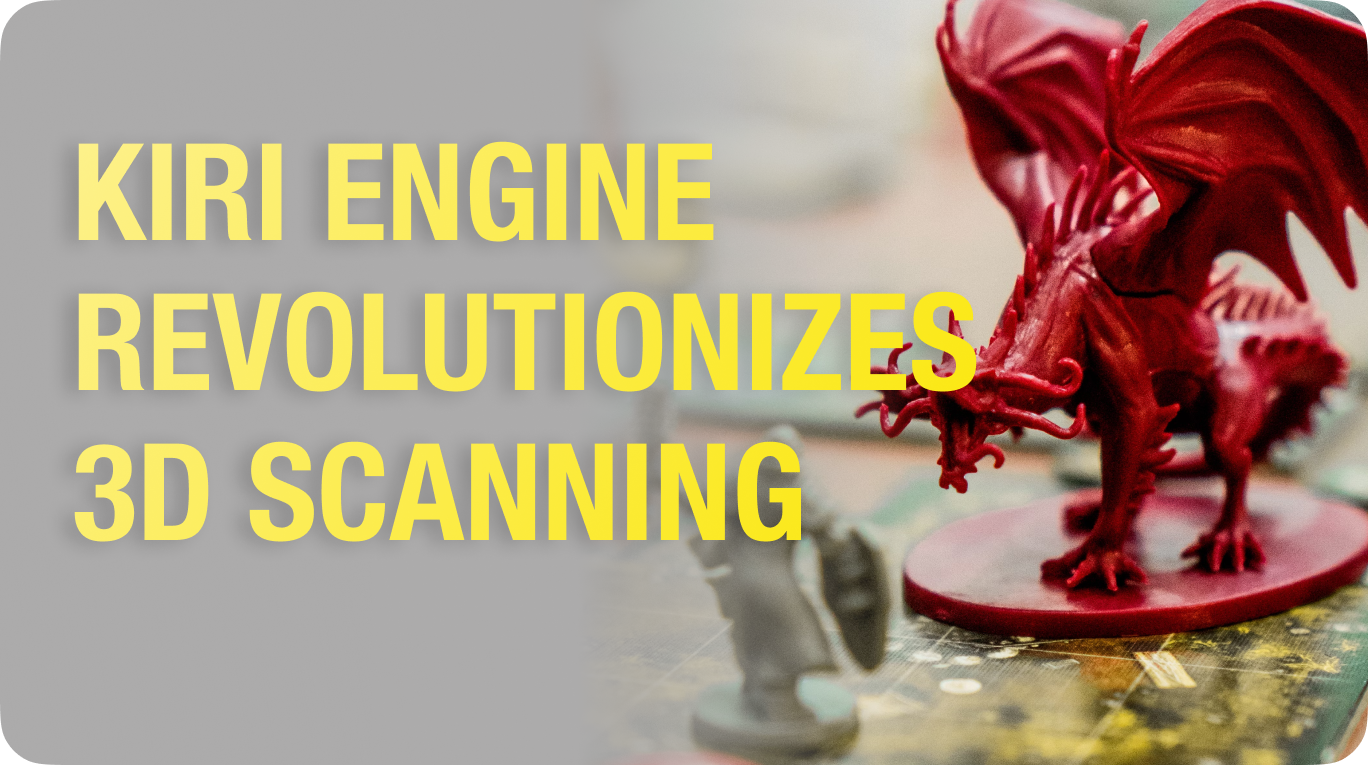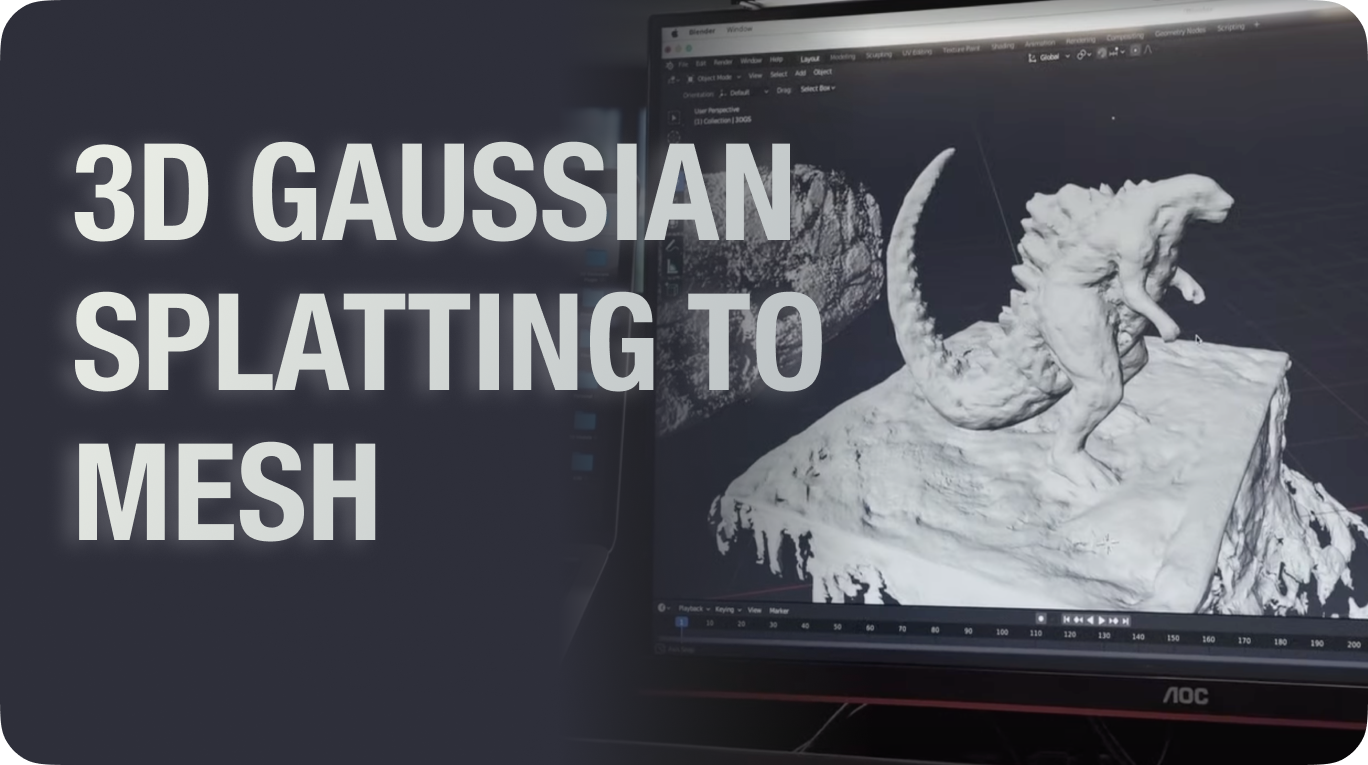What is Photogrammetry?
The technology of stitching together the unique features from a set of images to create a 3D representation, explained.
Photogrammetry: A Quick Summary
Photogrammetry, as the name suggests, is a technique that utilizes photos to reconstruct unique feature points seen on a set of photos into a surface mesh. Analyzing the features of an object, photogrammetry became a very handy tool for many 3D creators to quickly and efficiently generate realistic 3D assets without having to spend countless hours on modeling 3D content from the ground up.
The algorithm of photogrammetry processes images and stitches them together to create a 'digital replica' of objects from the physical world.
 Construction Visualization of Photogrammetry Algorithms
Construction Visualization of Photogrammetry Algorithms
This technique has long existed before the creation of computers, as it was first utilized in the 1800's for architectural survey. Nowadays, photogrammetry is most commonly seen in usage for model reconstruction through computing power to create digital assets. As photogrammetry serves to create highly realistic 3D models directly derived from their real life counterparts, it can be spec-demanding for hardware in order to perform accurate and high-efficiency feature point analysis.
How does KIRI Engine Use Photogrammetry?
KIRI Engine is a '3D Scanner App' that effectively utilizes photogrammetry as its main method to help 3D creators around the world to generate detailed 3D models directly from their fingertips. Despite photogrammetry requiring a high threshold of computing power, KIRI Engine effectively utilizes cloud-proecessing and storage to combat this limitation, offering state-of-the-art photogrammetry on iOS, Android, and the web.
.9STKmvc3.png) KIRI Engine's Photo Scan Interface
KIRI Engine's Photo Scan Interface
With the implementation of cloud-based photogrammetry, KIRI Engine users can create detailed 3D models on the go, without sacrificing time and effort to go through trial and error on the computer to learn and process photogrammetry via complex software.
KIRI Engine implements photogrammetry in its flagship 3D scanning method: Photo Scan, where users can upload or use the built-in camera to take pictures around a given object. With a straightforward and intuitive user experience, KIRI Engine prompts guides to walkthrough users in taking ideal photos for algorithmic processing.
Is Photogrammetry a Magic Solution to Replicate All Objects into 3D Models?
While photogrammetry is an advanced and powerful tool that can transform objects from the physical world into digital assets, it still has its limitations. As mentioned above, photogrammetry works on the basis which analyzes unique 'feature points' on a given object's surface, but not all objects are 'featureful' in the way that photogrammetry prefers.
Let's look at it this way. Featureful objects can be a rock, a statue, or as simple as a shoe, but objects such as glasses, screens, or plastic bottles aren't considered 'featureful' and would give the photogrammetry algorithm a very difficult time trying to process images of these items. Why?
This is because they lack consistent, unique features spread across their surfaces, as the reflections will inflict different features as the camera changes angles. This will result in photogrammetry not being capable of reconstructing surface meshes from these objects. At best, it will be a blob of unusable mesh.
.E8pOIDNC.png) Scan Results of the Same Object Using Different Scanning Methods
Scan Results of the Same Object Using Different Scanning Methods
Luckily, there are alternative methods to photogrammetry such as Featureless Object Scan and 3D Gaussian Splatting. These features were developed to combat photogrammtry's limitations and are currently available on KIRI Engine. With these additional 3D scanning methods, KIRI Engine users have a variety of tools when it comes to mesh generation as well as comprehensive 3D scanning.
 Workflow
WorkflowHow the KIRI Engine app is Revolutionizing 3D Scanning for Game Developers
 KIRI Team · Apr 12, 2023
KIRI Team · Apr 12, 2023 Announcement
Announcement3DGS to Mesh is Here, Convert Realistic 3DGS Visualizations to OBJ
 KIRI Team · Mar 12, 2024
KIRI Team · Mar 12, 2024 Community Highlight
Community HighlightUnleash Your 3D Creativity with KIRI Engine: Join the Vibrant Community and Explore Stunning Models!
 Jack Wang · Jul 27, 2023
Jack Wang · Jul 27, 2023